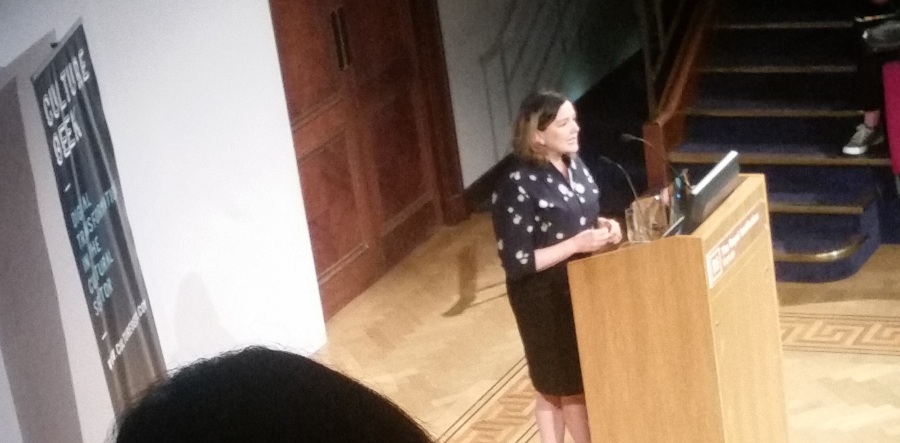Digital innovation in the Arts and Culture Sector: Culture Geek 2016
As mentioned in our first blog post, we are in the midst of conference season and in June were delighted to attend the Culture Geek conference in the Royal Institution, London. As the new research intern and a Master’s student in Arts Management, I was delighted to attend this conference to gain insight from the impressive line-up of speakers from some of the world’s finest cultural institutions such as MoMA, The Royal Albert Hall and Sónar Festival. The topic had us sold; digital transformation for leading culture organisations.
Audiences, digital, and visual arts
The speakers discussed varying ways in which their organisations react to the ever-changing digital landscape. One of the conference highlights was a talk by Fiona Romeo, Director of Digital Content and Strategy at MoMA. MoMA recognise that most encounters with art now happen online and they have used this to their advantage by using digital channels in a way that has significantly expanded their audience. Interestingly, while up to 3 million people visit its galleries each year, MoMA has more than 6 million followers on social media.
Romeo stated that artists are the entry points for their collections, with the name of an artist being the most used search on their website. With this in mind, MoMA have found that social media posts relating to the actual artists eg. Birthdays messages get a lot of likes and responses from their followers. Perhaps this practice could be adopted by galleries here to engage their online audience?
Another tip from MoMA relates to the online release of works acquired by the museum. Here, the individual curator releases a series of social media posts expressing why they chose the artist or work. This has been very successful for MoMA in creating a dialogue with audiences and is relatively easy to put into practice.
 Fiona Romeo, Director of Digital Content & Strategy at MoMA
Fiona Romeo, Director of Digital Content & Strategy at MoMA
Digital for heritage organisations
More interesting insight came from the Head of Marketing and Communications at the Royal Albert Hall, Louise Halliday, talking about ‘Embedding Digital in a Heritage Organisation’. The Royal Albert Hall has a very diverse audience base and want every person who comes through the door to have an unforgettable experience. Louise talked about their success with using Morris Hargreaves McIntyre’s Culture Segments and the importance of segmenting audiences based on their motivations as opposed to solely past booking behaviour. So, they now take into account customers who like to read a lot of review before purchasing tickets and market accordingly. We couldn’t agree more with Halliday’s comments on the importance of making decisions based on data as opposed to just making assumptions about your audience. Here are some key steps outlined by Halliday:
- Define your goals
- Find out what makes your audience tick
- Design principles and constantly refer back to your goals
- Exploit strengths
- Always remain true to your brand

